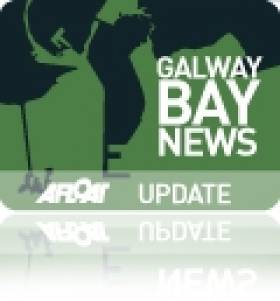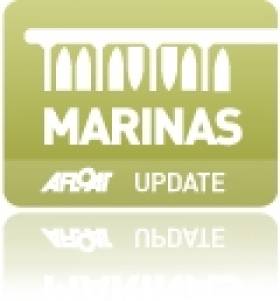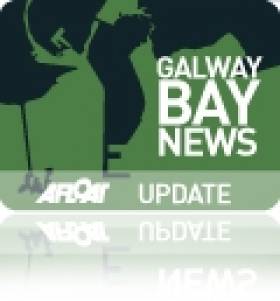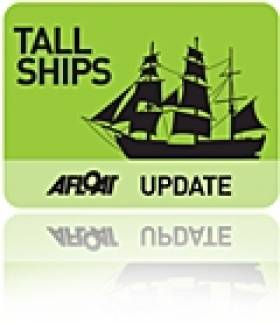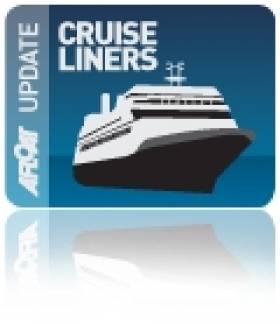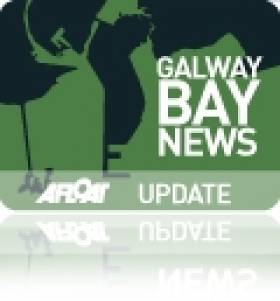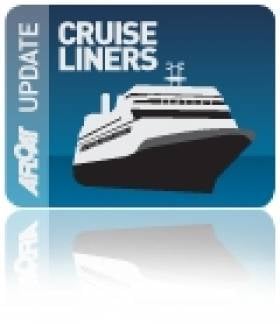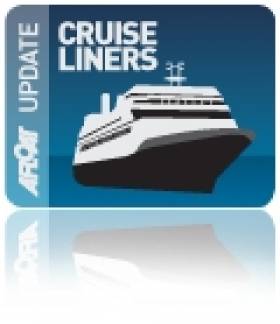Displaying items by tag: Galway Harbour
Fodder Crisis: Minister Considers Shipping Hay to Galway Harbour
#ShippingHay-Cargo deliveries of hay to Galway Harbour port is under consideration of Minister for Agriculture Simon Coveney in a bid to address the fodder crisis, according to Galway Bay FM.
Roscommon/South Leitrim Independent TD Denis Naughten says the Minister has confirmed he is exploring the idea of leasing a ship for such a delivery to Galway and other ports nationwide.
He says haulage of fodder by road is limiting the amount that can be imported and also costs substantially more than a large scale shipment.
Speaking to Galway Bay fm news, Deputy Naughten says farmers are increasingly concerned because of a lack of carryover of fodder and cannot afford to wait for supply.
Galway City Marina. Yacht & Boat Berths & Storage in Galway
Galway City Marina is situated in the confines of Galway Harbour and is operated by the Galway harbour company. Freshwater and electrical power is available at the pontoons. Power cars can be purchased from the harbour office during the day and also from a local pub 'Bar 8' on dock located on Dock Road. A number of visitor pontoons are available for hire during the summer and for winter layup. Sailors intending to call to Galway Harbour should first make contact with the Harbour office to determine if a berth is available, as demand is high in this quiet and beautiful part of Ireland.
#GalwayPort - Galway's city manager has welcomed the recognition of Galway Port by Government as a 'port of regional significance'.
As previously reported on Afloat.ie, the National Ports Plan launched this week brings about a move away from a 'one size fits all' policy in the ports sector to a three-tier stricture that recognises the different roles that Ireland's ports play in the economy at both a national and regional level.
Galway Port is one of 14 ports, five of them in State hands, that account for some 8% of national trade, and which will be placed within a local authority-led governance and shareholding structure.
Galway Bay FM quotes city manager Joe O'Neill as saying that it's as yet to early to speculate on plans to transfer control of the port to the local authority before the necessary legislation is put in place.
It is also unclear whether it will be the city, county or a combination of both that would be responsible for the port in the coming years.
Meanwhile, the Galway Harbour Company is expected to seek planning permission for the first phase of its expansion plans shortly.
In January, Afloat.ie reported on a 'fast-track' on the cards for the redevelopment scheme after plans were revived in August last year.
The new first phase, at a cost of €50 million, will see the port extended by some 57 acres to accommodate a greater number of commercial ships and the new generation of cruise liners.
And as Galway Bay FM confirms, the plans will be lodged with An Bord Pleanala under IROPI (Imperative Reasons of Overriding Public Interest) legislation.
West Meets East: As Semester at Sea Ship Heads for The Gathering
#SEMESTER SHIP – Having made a recent visit to Galway, the cruiseship Explorer with more than 800 students, academics and crew are on board, as previously reported on Afloat.ie, is currently heading to the opposite side of the island, with a visit to Dublin Port, writes Jehan Ashmore.
The 25,000 tonnes vessel with its floating campus is due to dock in the capital tomorrow morning at Ocean Pier. The 180m vessel, formerly the Olympic Explorer built in 2000 for Royal Olympic Cruises is currently providing a "semester at sea" (SAS) programme through a world tour.
The SAS is operated on a not-for-profit initiative for the Institute for Shipboard Education, in co-operation with the University of Virginia in the US. Students taking the educational programme had set off on the world voyage from Halifax, Nova Scotia, with the first leg to Galway.
When Explorer berths in Dublin Port, she will join the United States Navy landing ship USS Fort McHenry (LSD-43) which as previously reported on Afloat.ie had already arrived last Thursday for the American Football Week.
It was downriver from her Ocean Pier berth at the nearby O2 Arena, where last night's televised "The Gathering: Notre Dame- A Welcome Home" , a special concert which was held for fans in the Docklands venue.
Today the Emerald Isle Classic with 33,000 fans of the games two big boys, Notre Dame and the Navy, is been held this afternoon, on the far side of the Liffey at the Aviva Stadium.
After her two-day call to Dublin the Explorer continues on its global tour with calls to the UK, Belgium, Portugal, Spain, Morocco, Ghana, South Africa, Argentina, Uruguay, Brazil and Dominica.
Grand Old Lady of the Sea Belém Visits Galway
#TALLSHIP GALWAY – Not all tallships visiting Irish waters were concentrated in Dublin Port for the successful tallships festival, as the French three-masted barque Belém, built in 1896, docked into Galway Harbour last week, writes Jehan Ashmore.
She moored alongside the North Dun Aengus Quay, in the single dock basin port, where the veteran vessel (116 years old!) stayed for two nights. On board were 49 trainees who had made the passage from St. Malo in Brittany.
Belém which is run by the Paris based Belem Fondation, has had a long and varied career, as previously reported on Afloat.ie.
According to Galway Harbour Master, Brian Sheridan she has had an "interesting history" trading mostly to the West Indies and Guyana before being owned by the Duke of Westminster and also by Arthur Ernest Guinness.
In recent years Belém has called to several Irish ports, with the last visit to Galway in 2007 and also to Dublin in 2010 for the inaugural French Market Festival. She also took part in the first Tall Ships Races to be hsoted in Waterford in 2006.
She has also been involved in transporting commercial quantities of wine between Bordeaux and Quebec and also on a publicity wine-trade marketing visit to Dublin, prior to her call in 2010.
Plantours Cruises Hamburg Makes Maiden 'Irish' Call
#CAPITAL CRUISE CALLS – Tonight two cruiseships are due to depart Dublin Port, they are Plantours Cruises Hamburg (2007/15,067grt), which made its maiden 'Irish' debut call to the capital, followed by Compagnie du Ponant's Le Diamant, writes Jehan Ashmore.
Plantours is a German based operator and is one of several new entrants providing cruises to Irish ports, as previously reported on Afloat.ie. Among the newcomers are MSC Cruises, whose MSC Lirica finally made her first call to Cobh at the weekend, as an earlier scheduled call this month, was cancelled due to bad weather.
Both the visiting vessels to Dublin Port today, had by coincidence arrived from Penzance, Cornwall and the Hamburg, is no stranger to the capital, having previously operated as Hapag-Lloyd's C. Columbus.
Whereas the French operated Le Diamant (1974/8,282grt) has been in Irish waters throughout this month, with a call to Galway on 17th August. On the same day Voyages of Discovery, which is part of the All Leisure Group, saw their Discovery also make an anchorage call of the mid-western port.
Disabled Sailors More Than Welcome at Galway VOR Finale
#VOLVO OCEAN RACE - A new accessible pontoon and ramp in Galway Harbour will enable disabled sailors to get fully involved in events to celebrate the Volvo Ocean Race finale next weekend, the Galway City Tribune reports.
The permanent pontoon has been set up at the docks in the city centre, giving wheelchair users complete access to and from boats moored in the marina - along with the thousands who will be given the opportunity to learn to sail during the VOR weekend.
A highlight of the festivities will be the Irish Disabled Sailing Association regatta, which will see over 100 sailors with physical disabilities in competition on Galway Bay.
Previously the only access for disabled sailors in Galway was via a small slipway at Galway Bay Sailing Club in Oranmore, which made boarding and alighting an awkward process.
But the new pontoon is hoped to leave a lasting legacy for the City of the Tribes - and encourage many more wheelchair users to get afloat.
“The rehearsal last week went really well," said Liz Gantly of the Galway Speeders Club, which promotes sport for young people with disabilities. "We are hoping to have over 100 disabled people from all over the country trying out sailing during the Volvo Ocean Race.”
The Galway City Tribune has more on the story HERE.
Historic Cargo Delivered for Galway’s Grand Finale
#VESSEL VOLVO VILLAGE – Following yesterday's historic arrival of the Deo Volente, the first container ship to be unloaded in Galway Harbour which took six hours to complete concluded the delivery of logistics for the Volvo Ocean Race Grand Finale, writes Jehan Ashmore.
The cargo of containers packed with the spectator stand for the prestigious events 'Pop-Up' Village had travelled from Lisbon. But before any of this could be done the heavy-lift cargoship had to enter through the Galway's port dock gates. This was followed with the vessel making manoeuvres in the confines of the tidal basin of Dun Aengus Dock. It was a tight squeeze as the 105m long vessel edged closer to the berth in the basin which was witnessed by onlookers lining the quays.
The vessels cargo was almost the entire race village which is a travelling show that traverses the globe as part of the Volvo Ocean Race 2011-2012. It provided a "new challenge for Galway Harbour in handling containers" said Harbour Master Captain Brian Sheridan and I am delighted that the operation went better than anticipated.
After overnighting in the port, Deo Volente sailed this morning en-route to Rotterdam to pick up a cargo bound for the St. Lawrence Seaway. Currently the vessel is underway off the south-west coast.
Bremen Visits Galway
#GALWAY CRUISE CALL– Following last month's first cruise call this season of Silver Explorer to Galway Docks, the city of the tribes welcomed the Bremen yesterday, writes Jehan Ashmore.
Unlike the Silver Explorer, operated by Silverseas Cruises, which transited through the narrow entrance into Dun Aengus Dock, the Bremen (1990/6,752grt) made an anchorage call offshore. The latter vessel which is operated by Hapag-Lloyd, has a four-star ranking according to the Berlitz Guide to Cruising 2012.
The small expedition ship takes her 164-guests who in comparison are served by a large crew numbering 100. The vessel visits some of the most beautiful and remote regions in the world which has included visiting both the poles at the Artic and Antarctica.
On this particular cruise, she had called to Kilronan, Inishmore on the Aran Islands and is currently underway heading for Tory Island.
The presence of the Silver Explorer, previously Prince Albert II, made for an interesting experience as Galwegians witnessed the vessel navigate skillfully through the tight confines of Dun Aengus dock system.
A further six cruise calls are scheduled, the next been Cruise & Maritime Voyages (CMV) Marco Polo, the classic cruiseship with her liner heritage is to make the port of call in July.
Call Opens Galway Harbour Cruiseship Season
#CRUISE LINERS – Galway Harbour Company welcomed the first cruise caller this year with the Silver Explorer an expedition cruiseship with a capacity for over 130 guests, writes Jehan Ashmore.
The 6,072 tonnes vessel is on a cruise from Bordeaux and her most recent ports of call have been to Glengariff and Waterford. This evening the ship heads for Killybegs where passengers will visit the north-west.
For the rest of the season Galway port is scheduled for eight more cruise calls. Two cruise calls are scheduled in mid-August while the Silver Explorer is to make a return visit later that month. She is no stranger to Irish waters having served as the former Prince Albert II.



























